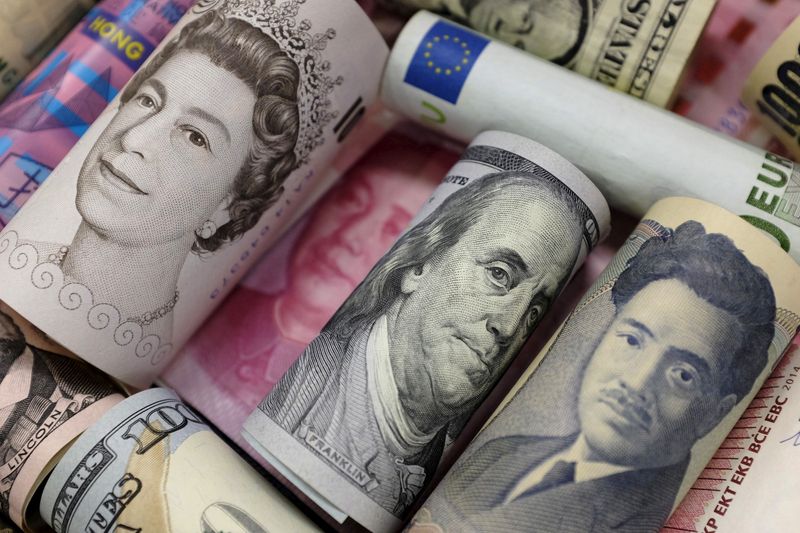By Herbert Lash and Alun John
NEW YORK/LONDON (Reuters) -The dollar marched higher on Tuesday after a report on the U.S. services industry in August reinforced the view that the United States was not in recession, while the euro and rate-sensitive Japanese yen tumbled further against the greenback.
The dollar index rose 0.547% after the Institute for Supply Management said its non-manufacturing PMI edged up to a reading of 56.9 from 56.7 in July, the second straight monthly increase after three months of declines.
The surprise reading – economists in a Reuters poll had forecast it would slip to 54.9 – followed the ISM’s manufacturing survey last week that showed U.S. factory activity grew steadily in August in contrast to other major economies.
“Some of the top-tier numbers on the U.S. economy are suggesting there’s no recession in sight. That’s gone some way in pushing up Treasury yields and given the dollar an added boost,” said Joe Manimbo, senior market analyst at Convera USA LLC, a money transfer and foreign exchange operator.
Marc Chandler, chief market strategist at Bannockburn Global Forex, said the U.S. economy is slowing but it’s still “the least ugly” among the major Western economies.
While the dollar’s path of least resistance is upward, its strength will be challenged next week when the U.S. Consumer Price Index for August is released, Chandler said. The data is expected to show the pace of inflation has begun to slow.
“The early call is for a decline in the month-over-month headline rate,” he said. “But the core rate will be stickier.”
The euro and sterling initially recovered from multi-year lows they hit on Monday against the dollar, but the single currency later slipped further to a new 20-year low.
Central bank rate hikes are garnering the attention of the currency markets, with the Bank of Japan standing out at the Jackson Hole symposium as the only one that remains resolute in keeping monetary policy accommodative, HSBC said in a note.
The correlation of the dollar-yen exchange rate with U.S. yields has rebounded to near its strongest year-to-date level, HSBC said. The bank changed its forecast for the pair to 144 at month’s end, up from 140 previously.
The yen weakened further, down 1.56% at 142.82 per dollar. The dollar is up 24% against the Japanese currency so far this year.
The yield on benchmark 10-year U.S. Treasury notes jumped 14.3 basis points to 3.334% to highs last seen in June, on expectations the Federal Reserve will keep hiking interest rates as it tightens monetary policy in a bid to quell inflation. [US/]
In contrast, the yield on 10-year Japanese government bonds was 0.24%, due to the BOJ’s yield curve control policy.
Sterling rose but later traded little changed with the pound up 0.01% to at $1.1524. The euro fell 0.18% to $0.9908, slipping further away from parity with the dollar.
Britain’s incoming Prime Minister Liz Truss is considering a freeze on household energy bills to try to avert a winter cost-of-living crisis for millions of households, Reuters reported on Monday.
Truss, who inherits an economy in crisis, vowed to tackle a daunting set of challenges that include soaring energy bills, a looming recession and industrial strife.
European Union ministers will meet on Friday to discuss urgent measures to respond to a surge gas and power prices that is hammering European industry and hiking household bills, after Russia curbed gas deliveries to the bloc.
The Australian dollar slid to a seven-week low after the Reserve Bank of Australia raised its cash rate by 50 basis points, but signaled it was not on a preset path for future rate hikes.
In China, the authorities’ efforts to slow the yuan’s recent depreciation were proving unsuccessful, with the yuan slipping to a fresh two-year low of 6.9784 in offshore trade.
China’s central bank late on Monday cut the foreign exchange reserve requirement ratio (RRR), freeing up dollars for banks to sell.
Currency bid prices at 3:04 PM (1904 GMT)
Description RIC Last U.S. Close Pct Change YTD Pct High Bid Low Bid
Previous Change



